National parks in Karnataka offer some of India’s richest wilderness zones, combining the Western Ghats and the Deccan Plateau. These parks—like Bandipur, Nagarahole, Bannerghatta, Kudremukh, and Anshi—are perfect for wildlife enthusiasts. Visitors enjoy jeep safaris in Kabini, treks across scenic ridges, and butterfly watching near Bengaluru. Beyond wildlife, these national parks in Karnataka showcase the harmony between local communities and conservation efforts, protecting southern India’s natural heritage. Exploring these parks provides a unique chance to experience nature, culture, and dedicated conservation all in one.
Top 10 National Parks In Karnataka
National parks in Karnataka safeguard tigers, elephants, and a wide mix of habitats in the Western Ghats and the Deccan Plateau. They also offer safaris, hiking trails, and insights into conservation, giving nature lovers plenty to explore.
1. Bandipur National Park
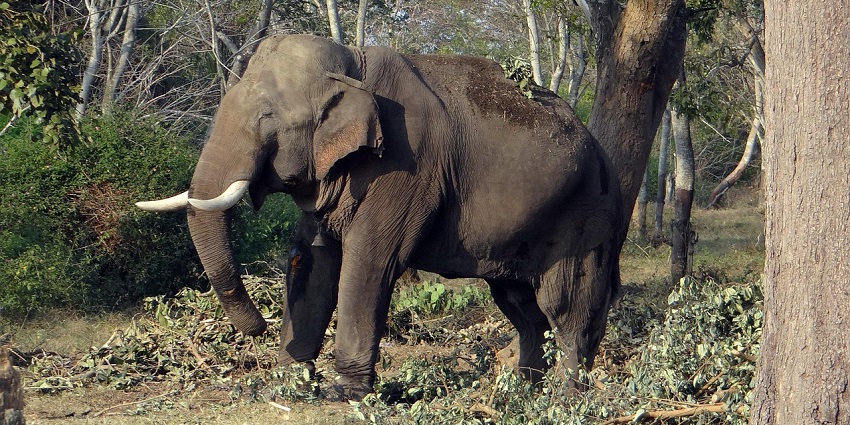
Bandipur National Park, part of the Nilgiri Biosphere Reserve, is one of India’s most famous tiger reserves and a key highlight of Karnataka’s wildlife circuit. Covering 874 square kilometres, it forms a vital corridor linking Nagarahole, Mudumalai, and Wayanad, together creating one of the largest connected habitats for Asian elephants and tigers. Dry deciduous forest and open woodland make the park a good place to watch elephants, gaurs, and chital, with the chance of spotting leopards or dholes. Birdwatchers are also drawn here, with more than 200 species recorded, including the Malabar pied hornbill and the crested serpent eagle.
Location: Chamarajanagar district, southern Karnataka
Best For: First-time safari goers and tiger sightings
Highlights: Elephants, gaurs, dholes, and over 200 bird species
Suggested Read: A Day At Karanji Lake Nature Park
2. Nagarahole National Park
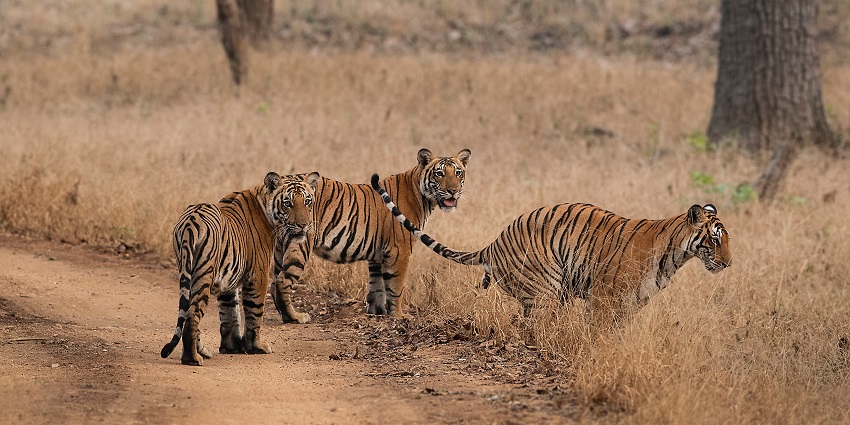
Photo: Anuradha Marwah / Shutterstock
Nagarahole National Park, also known as Rajiv Gandhi National Park, ranks among the best national parks in Karnataka and is part of the Nilgiri Biosphere. It stretches across nearly 640 square kilometres, its streams and the Kabini River pulling in herds of elephants and gaur. For many visitors, that makes it one of the most reliable places in India to watch wildlife moving freely in its own habitat. The forest here is thick with teak and rosewood, a cover that shelters tigers and leopards, while the grasslands hold wild dogs, deer, and sloth bears.
Location: Mysuru and Kodagu districts, Karnataka
Best For: Elephant herds, leopard and tiger encounters
Highlights: Kabini backwaters, teak forests, river systems
3. Bannerghatta National Park
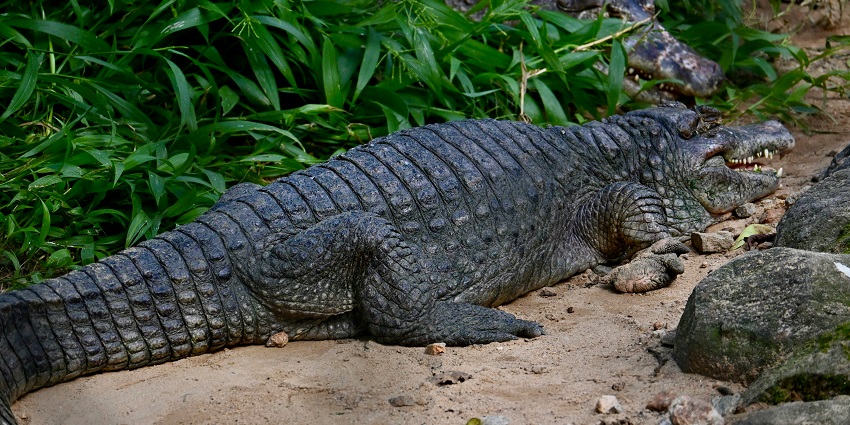
Photo: Praswin Prakashan / Unsplash
Bannerghatta National Park, only 22 kilometres from Bengaluru, is among the most accessible places to see wildlife in southern India. Unlike remote reserves, it combines a protected forest with the Bengaluru Bannerghatta Biological Park, where visitors can take guided lion and tiger safaris, walk through a zoo, and explore India’s first butterfly park. Its closeness to the city makes it especially popular with families, school groups, and day-trippers who want an easy nature escape. If you’re searching for the national parks in Karnataka ticket price, Bannerghatta publishes straightforward information on entry and safari costs, broken down by adults, children, and international travellers.
Location: Bangalore Urban district, Karnataka
Best For: Family-friendly wildlife trips near Bengaluru
Highlights: Zoo, lion & tiger safari, Butterfly Park
Suggested Read: Nagarhole National Park
4. Kudremukh National Park
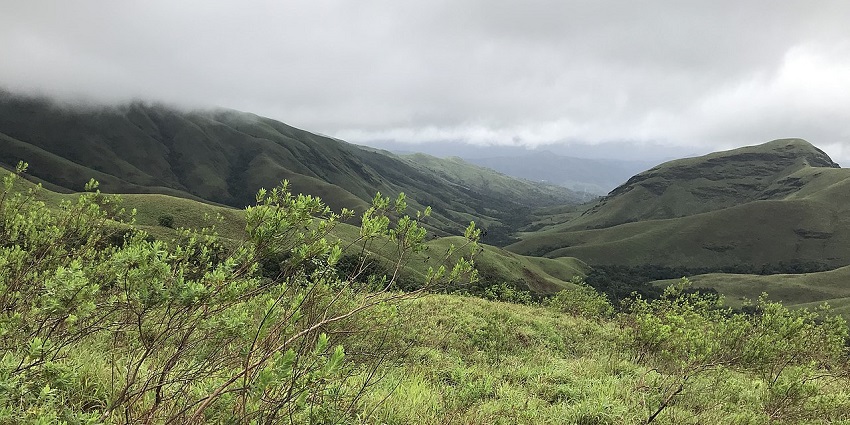
Photo: Navi guy / Wikimedia Commons
Kudremukh National Park covers more than 600 square kilometres in the Western Ghats, a mix of shola forest, open grassland, and sharp peaks. The park takes its name from a hill shaped like a horse’s face, a landmark well known among trekkers and nature enthusiasts. As one of the most scenic Karnataka national parks, it shelters rare wildlife such as the lion-tailed macaque, the Malabar civet, and many endemic birds. The Bhadra and Tunga rivers have their source here, a reminder of the park’s value as a major watershed region. Treks to Kudremukh, Kurinjal, and Gangadikal peaks are popular, though each needs a permit from the Forest Department.
Location: Chikkamagaluru district, Western Ghats, Karnataka
Best For: Trekkers and Western Ghats landscapes
Highlights: Lion-tailed macaque, grassland–shola mosaic
5. Anshi National Park
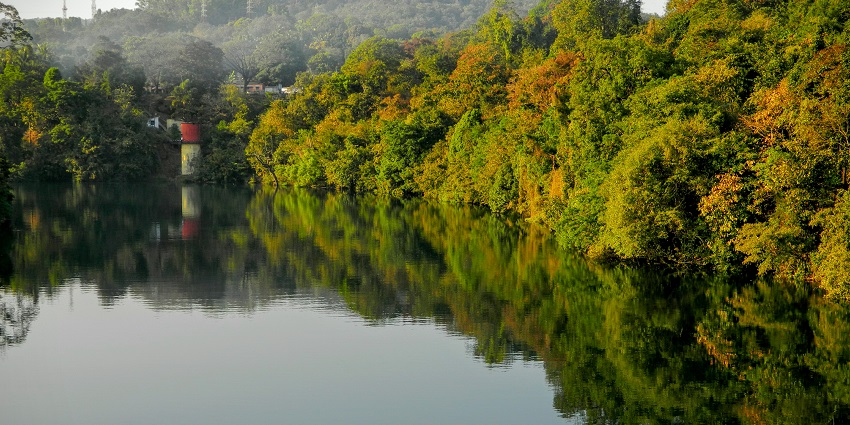
Photo: AbhiThite / Shutterstock
Anshi National Park, which was merged with Dandeli Wildlife Sanctuary in 2015 to create the Kali Tiger Reserve, still stands out as a gem among the top national parks in Karnataka. Spread across dense evergreen forests of the Western Ghats, it gives visitors a raw, less commercialised experience compared with the more visited parks to the south. The reserve is known for rare glimpses of the black panther, flocks of hornbills moving across the canopy, and herds of gaur and elephants along the forest trails. You’ll also find sloth bears, jackals, wild dogs, and different reptiles here, a mix that underlines the area’s importance for biodiversity.
Location: Uttara Kannada district, northwestern Karnataka
Best For: Birders, black panther enthusiasts, raw wilderness
Highlights: Hornbills, evergreen forests, rafting nearby
Suggested Read: Anshi National Park
6. Kabini Backwaters
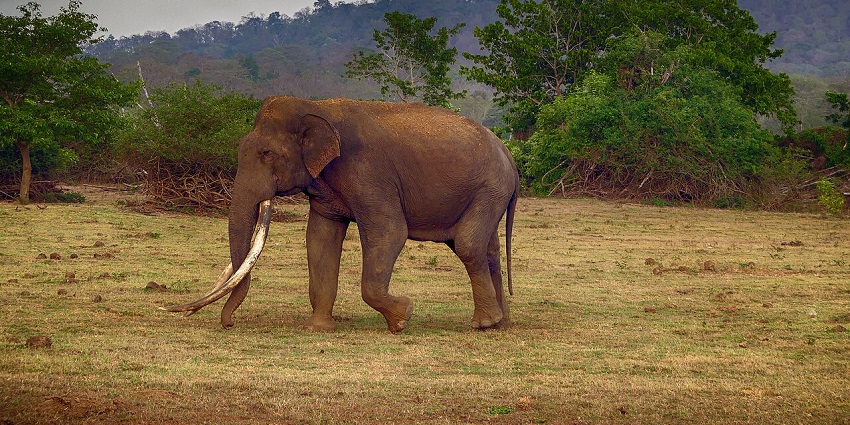
Photo: A. J. T. Johnsingh, WWF-India and NCF / Wikimedia Commons
Kabini, on the edge of Nagarahole, is one of the most celebrated wildlife zones connected with the national parks in Karnataka. When the Kabini River backwaters recede in summer, grasslands emerge and draw animals in large numbers. It is one of the best places in India to watch elephant herds, often crossing the river or feeding along the banks. Predators also thrive here, with regular sightings of tigers and leopards, and the rare black panther adding to the area’s fame. Safaris here are organised by the Karnataka Forest Department and Jungle Lodges, with visitors able to choose jeep or boat rides.
Location: Border of Mysuru and Kodagu districts, Karnataka
Best For: Elephant congregations and boat safaris
Highlights: Black panther sightings, crocodiles, waterbirds
7. Himavad Gopalaswamy Betta
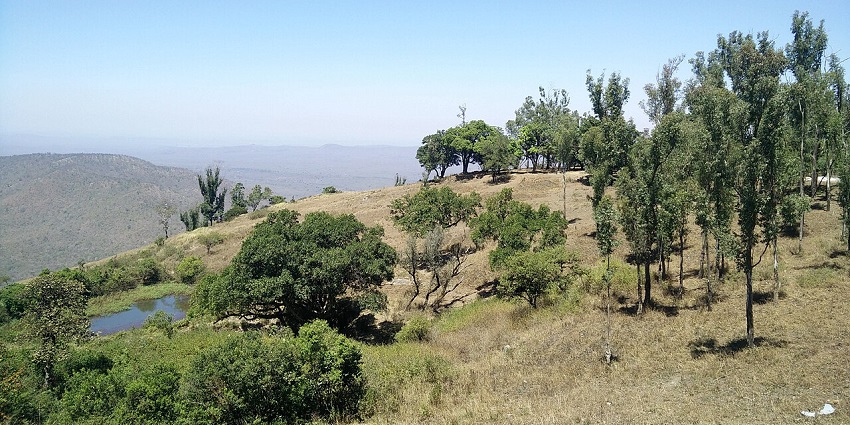
Photo: athulvis / Wikimedia Commons
Himavad Gopalaswamy Betta tops out at about 1,450 meters. It’s Bandipur’s highest hill, known as much for the temple on its summit as for the forests that wrap around it. The word “himavad” itself means fog in Kannada, a name that fits its mysterious atmosphere. At the summit stands the ancient Gopalaswamy Temple dedicated to Lord Krishna, drawing pilgrims as well as nature enthusiasts. Because the hill lies within the park’s core tiger reserve, private vehicles are stopped at the forest checkpoint, and visitors continue by government buses that operate at fixed hours. Wildlife sightings are often possible on the way up, with elephants, spotted deer, and sometimes leopards appearing in the surrounding forests.
Location: Chamarajanagar district, Karnataka
Best For: Pilgrims, photographers, panoramic views
Highlights: Ancient Krishna temple, misty landscapes
Suggested Read: Things To Do In Karnataka
8. Bhadra Wildlife Sanctuary
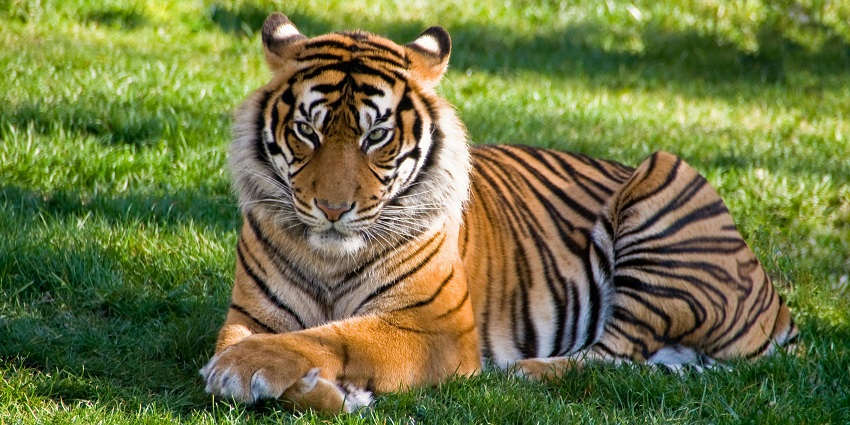
Photo: Jose Almeida / Pexels / Image For Representation Only
Although officially a wildlife sanctuary, Bhadra is often grouped with the National Parks in Karnataka because of its biodiversity and its success with tiger conservation. The sanctuary covers about 490 square kilometres, with landscapes that include forested hills, quiet reservoirs, and broad river valleys. Declared a tiger reserve in 1998 under Project Tiger, it now supports a healthy population of big cats, along with elephants, leopards, wild dogs, and sloth bears. Birdlife is equally rich, with more than 250 species noted here, among them Malabar trogons, great hornbills, and white-bellied treepies. Jeep safaris are run by the Forest Department, usually starting from the Lakkavalli range near the Bhadra reservoir.
Location: Chikkamagaluru and Shivamogga districts, Karnataka
Best For: Peaceful alternative to crowded tiger reserves
Highlights: Tiger reserve, river backwaters, birdwatching
9. Sharavathi Valley Wildlife Sanctuary

Photo: Arkadeep Meta / Wikimedia Commons
Although not classified as a national park, the Sharavathi Valley Wildlife Sanctuary is often mentioned alongside the National Parks in Karnataka because of its ecological value and dramatic scenery. Covering 431 square kilometres, the sanctuary protects the Sharavathi River watershed, which also holds the famous Jog Falls, India’s second-highest plunge waterfall. The area is dominated by evergreen and semi-evergreen forests that give shelter to rare species such as the lion-tailed macaque and the Malabar civet. Other residents include elephants, gaurs, sloth bears, and leopards, while birdwatchers can look for Malabar hornbills, paradise flycatchers, and a variety of raptors.
Location: Shivamogga district, Western Ghats, Karnataka
Best For: Waterfalls, trekking, and endemic primates
Highlights: Jog Falls, lion-tailed macaques, hornbills
Suggested Read: Chincholi Wildlife Sanctuary
10. Someshwara Wildlife Sanctuary

Photo: Leo Rivas / Unsplash / Image For Representation Only
Someshwara Wildlife Sanctuary sits at the foothills of the Western Ghats and often rounds out the trail of places linked with the National Parks in Karnataka. It covers about 314 square kilometres, a mix of evergreen forest, rivers, and quiet valleys. The sanctuary connects with Kudremukh National Park, forming a corridor where elephants, leopards, and tigers move between the two. It is also known for rarities like the King Cobra and the Malabar civet, along with a long list of birds that draw serious birders. Within the forest lies Kudlu Teertha Waterfalls, a spot that combines trekking with a sense of calm.
Location: Udupi and Shivamogga districts, Western Ghats, Karnataka
Best For: Offbeat eco-travellers, herpetology, and birding
Highlights: King Cobra, Kudlu Teertha Waterfalls
Visiting the national parks in Karnataka is more than just exploring forests. Bandipur and Nagarahole reveal tiger habitats, Kudremukh offers misty grasslands, and Anshi boasts dense evergreen jungles. Whether on safaris, peaceful treks, or cultural spots like Himavad Gopalaswamy Betta, each park is unique. Strict rules protect wildlife, making your visit part of conservation. Ready to explore? Plan your trip with TripXL and discover Karnataka’s wild side.
Cover Photo: Vivek K Kaushik / Unsplash


 WhatsApp
WhatsApp
 Twitter
Twitter









